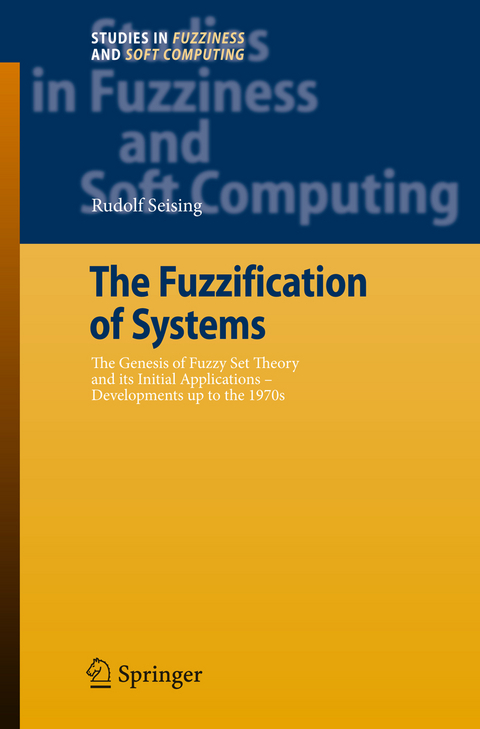
The Fuzzification of Systems
Springer Berlin (Verlag)
978-3-642-09090-5 (ISBN)
In 1965 Lotfi Zadeh, a professor of electrical engineering at the University of California in Berkeley, published the first of his papers on his new Fuzzy Set Theory. Since the 1980s this mathematical theory of "unsharp amounts" has been applied in many different fields with great success. The word "fuzzy" has also become very well-known among non-scientists thanks to extensive advertising campaigns for fuzzy-controlled household appliances and to their prominent presence in the media, first in Japan and then in other countries. On the other hand, the story of how Fuzzy Set Theory and its earliest applications originated remains largely unknown.
In this book, the history of Fuzzy Set Theory and the ways it was first used are incorporated into the history of 20th century science and technology. Influences from philosophy, system theory and cybernetics stemming from the earliest part of the 20th century are considered alongside those of communication and control theory from mid-century.
Today, Fuzzy Set Theory is the core discipline of "soft computing," and provides new impetus for research in the field of Artificial Intelligence.
Dr. Rudolf Seising studierte Mathematik, Physik und Philosophie in Bochum, war Wissenschaftlicher Mitarbeiter an der Fakultät für Informatik der Universität der Bundeswehr München und ist jetzt Wissenschaftlicher Assistent in der Wissenschaftsgeschichte an der Fakultät für Sozialwissenschaften derselben Universität; 1995 promovierte er an der Ludwig-Maximilians-Universität in München im Fach Wissenschaftstheorie.
Beginnings of Communication Technology in the 20th Century.- Logical Tolerance, Ensembles Flous and Probabilistic Metrics.- General Systems Theory and Cybernetics.- From Circuit Theory to System Theory.- Fuzzy Sets and Fuzzy Systems.- Fuzzifications.- The Fuzzification of Medical Diagnostics.- Conculsion.
From the reviews:
"Seising follows historically and contextually fuzzy set theory and its early applications by telling the story of Lotfi Zadeh, who coined the term 'fuzzy set' in 1964. This book is both a scientific reading and a biography; it attempts (and succeeds) to shed light on the (historic) context of the inception of this theory ... . Summing Up: Highly recommended. Upper-division undergraduates through professionals." (G. Trajkovski, CHOICE, Vol. 45 (5), January, 2008)
"The book is certainly a valuable contribution in that it provides the reader with a lot of historical data, references, and figures. The author has patiently collected his material over the years. ... the book can serve as a useful source describing many historical events related to the history of fuzzy sets." (Radim Belohlávek, Mathematical Reviews, Issue 2009 e)
| Erscheint lt. Verlag | 30.11.2010 |
|---|---|
| Reihe/Serie | Studies in Fuzziness and Soft Computing |
| Zusatzinfo | XXV, 412 p. |
| Verlagsort | Berlin |
| Sprache | englisch |
| Maße | 155 x 235 mm |
| Gewicht | 661 g |
| Themenwelt | Informatik ► Theorie / Studium ► Künstliche Intelligenz / Robotik |
| Informatik ► Weitere Themen ► CAD-Programme | |
| Mathematik / Informatik ► Mathematik ► Angewandte Mathematik | |
| Technik | |
| Schlagworte | Artificial Intelligence • Communication • Cybernetics • Electrical Engineering • Fuzziness History • fuzzy • Fuzzy Set • Fuzzy Sets • fuzzy system • Fuzzy Systems • Intelligence • Philosophy • Systems Theory |
| ISBN-10 | 3-642-09090-7 / 3642090907 |
| ISBN-13 | 978-3-642-09090-5 / 9783642090905 |
| Zustand | Neuware |
| Informationen gemäß Produktsicherheitsverordnung (GPSR) | |
| Haben Sie eine Frage zum Produkt? |
aus dem Bereich


